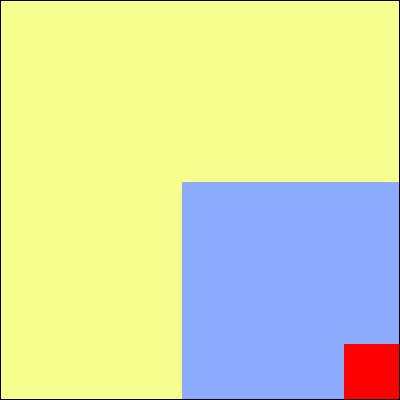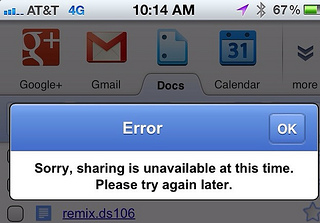WAC Summer Workshop:
Web Analytics with Hadoop and Pig


Aaron Binns
aaron@archive.org
http://archive.org/~aaron/wacsw.zip
About Me
- Aaron Binns
- aaron@archive.org
- Joined Internet Archive January 2008
- Senior Software Engineer
- Full-text search
- Web Analytics & other fun stuff!
- IIPC Program Officer [2010-2012]
Internet Archive
Agenda
- Web analytics — what is it?
- Web Archive File Formats: WARC, CDX, WAT
- Hadoop & Pig
- Examples
- Simple counting...at scale
- Closest capture
- Page similarity
- Language identification (almost)
Web analytics — what is it?
"Web Analytics is the measurement, collection, analysis and reporting of Internet data for the purposes of understanding and optimizing Web usage."Web Analytics Association
"The term Web Data Mining is a technique used to crawl through various web resources to collect required information, which enables an individual or a company to promote business, understanding marketing dynamics, new promotions floating on the Internet, etc.Web Data Mining.net
There is a growing trend among companies, organizations and individuals alike to gather information through web data mining to utilize that information in their best interest."
Web Archive Formats: WARC
- Web archive container file format
- ISO standard
- Full HTTP transaction
- DNS & whois records
- HTTP request
- HTTP response
- Metadata records
Web Archive Formats: CDX
- Index for Wayback Machine — not a standard
- Space-delimited text file
- Only essential metadata needed by Wayback
- URL
- Content Digest (SHA-1)
- Capture Timestamp
- Content-Type
- HTTP response code
- etc.
Web Archive Formats: WAT
- Yet Another Metadata Format! ☺
- Yet Another Metadata Format! ☹
- Less than full WARC, more than CDX
- Essential metadata for many types of analysis
- Avoids barriers to data exchange
- Work-in-progress: we want your feedback
Web Archive Formats: WAT
- WAT is WARC ☺
- WAT records are WARC metadata records
- WARC-Refers-To header identifies original WARC record
- WAT payload is JSON
- Compact & Hierarchical
- Supported by every programming environment
- Contains "essential metadata"
- page title
- HTML "meta" keywords, description, etc.
- Links with text
WAT: Example
Relative data sizes

Toolkit: Goals
- Arbitrary analysis of web archives
- Lower barriers and costs to researchers
- Easy and quick to learn
- Scales up and down
Toolkit: Overview
- Software
- Apache Hadoop
- Apache Pig
- Web Archive Files
- WARC
- CDX
- WAT
Why not just use a RDBMS?
- Web data is {un,semi}-structured
- Web data is heterogeneous
- Web data is nasty
- Duplicating data from web archive
- Cost ($ € £ ¥)
- Follow the industry leader(s)
Apache Hadoop

- Distributed Computation Framework
- Java
- Open source / Apache Licensed
- Inspired by Google MapReduce paper (2004)
- Yahoo!, Facebook, Twitter, IBM, etc.
- IBM Watson powered by Hadoop
Apache Hadoop, part 2
- HDFS
- Distributed storage
- Durable, deafault 3x replication
- Scalable: Yahoo! 60+PB HDFS
- MapReduce
- Distrbuted computation
- You write Java functions
- Hadoop distributes work across cluster
- Tolerates failures
Apache Hadoop, part 3
- Commodity Hardware
- Horizontal scaling
- Heterogeneous hardware
- Different cpu, memory, disk
- Increase capacity incrementally
- Replace failed hardware when convenient
- Yahoo! has 6,000 node Hadoop cluster
Apache Pig

- No Java required!
- Scripting language
- Similar to SQL
- Target users: analysts
- (Pretty) easy to learn
- Extensible with custom functions
- UDF: user-defined function
- IA provides library of UDFs
Pig Example: HTML page titles
Simple counting...at scale
Consider a 2 billion web page collection
- Generate Wayback Index for collection
- How many URLs from each TLD?
- How many URLs from each domain?
- How many HTTP 2xx, 3xx, 4xx, 5xx?
- etc.
Simple counting...at scale
Closest Capture
- Measure temporal coherency of a page
| foo.com | → | bar.com |
| March 5, 2008 | March 19, 2008 |
- Example:
| 2008-01-03 | foo.com | 2008-01-02 | bar.com | |
| 2008-02-22 | foo.com | 2008-02-19 | bar.com | |
| 2008-03-05 | foo.com | 2008-02-20 | bar.com | |
| 2009-05-30 | foo.com | 2008-03-19 | bar.com | |
| 2009-06-10 | foo.com | 2010-11-13 | bar.com |
Closest Capture
Web Page Similarity
- Measure similarity of URL versions over time
- Jaccard similarity
| |A ⋂ B| |A ⋃ B| |
- Example:
| A = Aaron Binns | → | | Aaron | | → | 1 |
| B = Aaron Ximm | | Aaron Binns Ximm | | 3 |
Web Page Similarity
- The Data Chef
- Jacob Perkins, infochimps.com
- Pig script computes Jaccard of 2 graphs
- Adapted to compute Jaccard of 2 bags of words
- Web pages are bags of words...
| 2011-08-22 | foo.com | Hello, welcome to foo.com! |
| 2011-08-23 | foo.com | Hello, welcome to foo.com! |
| 2011-08-24 | foo.com | Welcome to foo.com! |
| 2011-08-25 | foo.com | Sorry, but foo.com is closed, bye! |
- ...compute Jaccard of pairs of web pages
Web Page Similarity
- Example: cnet.com 2000-2001
| 2000-01-17 | cnet.com | |
| 2000-01-18 | cnet.com | ...not much changed |
| 2000-12-06 | cnet.com | ...not much changed |
| 2001-07-12 | cnet.com | Site redesign! |
- Step 1: Tokenize pages into bags of words
- Step 2: Compute Jaccard of URL versions
- Step 3: Profit!
Language Identification
Script Identification
中文ThisکوردیsentenceአማርኛisالعربيةmixedЧӑвашлаtogether.
From my own observation, biànyi is seldom used in Chinese daily conversations. When we speak 便宜, we just mean "cheap."
a az qalıb breyn rinq intellektual oyunu üzrə yarışın zona mərhələləri keçirilib miq un qalıqlarının dənizdən çıxarılması davam edir məhəmməd peyğəmbərin karikaturalarını çap edən qəzetin baş redaktoru iş otağında ölüb
آذربایجان دا انسان حاقلاری ائوی آچیلاجاق ب م ت ائلچيسي برمه موخاليفتي نين ليدئري ايله گؤروشه بيليب ترس شوونيسم فارس از آزادي ملتهاي تورکمن
ウェブ 画像 動画 地図 ニュース ショッピングGmailもっと見る ログイン
فارسی دری تاجیکیфорсӣ-тоҷикӣ
मानक हिन्दी)
हिंदी उर्दू, هندی اردو
ਪੰਜਾਬੀپنجابی
বাংলা
官话官話Guānhuà
Script Identification
Script Identification
From my own observation, biànyi is seldom used in Chinese daily conversations. When we speak 便宜, we just mean "cheap."
Pinyin for disambiguation (Language Log)
Resources
- Heritrix web harvester
- Wayback Machine
- Archive Commons (Java)
- Includes 'ia-tools.jar' from Pig examples
- Aaron's Pig Experiments
- Aaron's Blog...mostly Hadoop stuff
- WAT File Format
- Sample data from an Archive-It collection:






